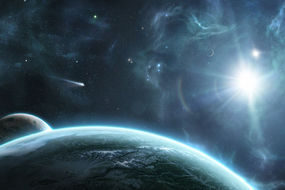“Are we alone?” Is probably the thought that haunts not only every astrophysicist but many others who realise how infinitely vast our universe is. We have been searching for life in our own solar system on planets like Mars, Europa and as NASA announced recently even Venus. But citizen scientists went further ahead in space and found two exoplanets orbiting a Sun-like star.
These citizen scientists are part of the Planet Hunters TESS project. The discovery was published in the Royal Astronomical Society with the list of citizen scientists who explored this project, led by NASA.
The star was dubbed as HD152843, which is about 352 light years away from us. This star has the same mass as that of our Sun, but 1.5 times bigger than that of our Sun. By the observations, it is assumed that two planets orbit around the star. If we have to consider the distance between the star and their planets, it’s about the same distance as that of Mercury and the Sun.
Planet b is similar to the size of Neptune and orbits the star in around 12 days. Meanwhile, planet c is 5.8 times bigger than Earth and it’s farther away from the star, hence takes 19-35 days to complete its orbit.
The discovery was done by observing the brightness of the star using the Transiting Exoplanet Survey Satellite (TESS) for over a month. The observation includes variation in the brightness of the star whenever the planets come in the field of the satellite, resulting in the dip of intensity. This indicates that there was at least one planet orbiting the star and all the citizen scientists agreed with two planets.
However, to confirm the presence of two planets and even to check the level of accuracy of the data, scientists used the High Accuracy Radial Velocity Planet Searcher for the Northern hemisphere (HARPS-N) telescope in Spain and the Extreme Precision Spectrometer at Lowell Observatory.
This discovery is just a starting point to find possible life, possible advance being in the universe. Finding a solar system like that of our own is not a small fleet but yet we are far away from solving that question.

